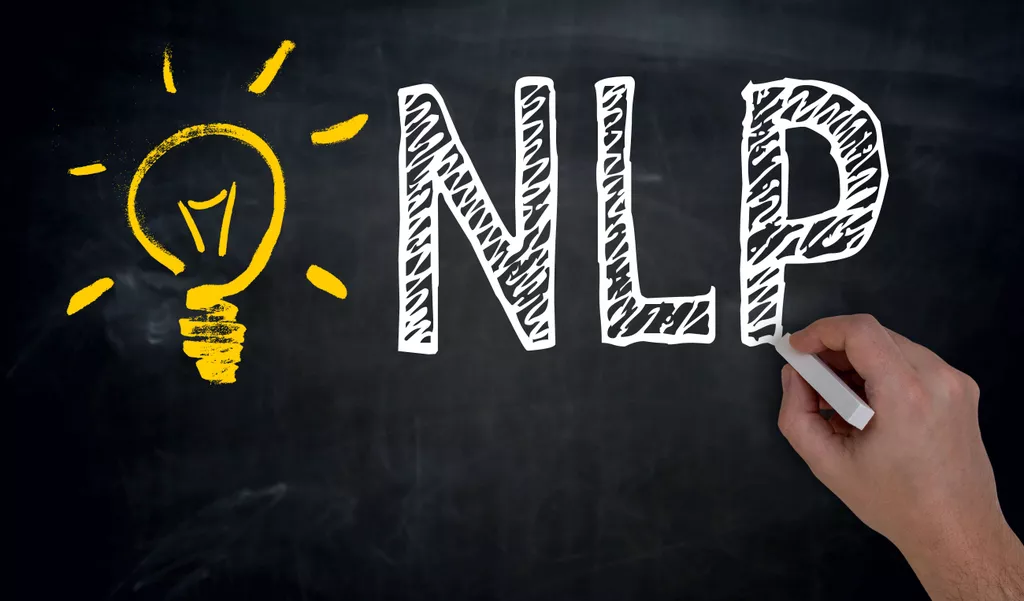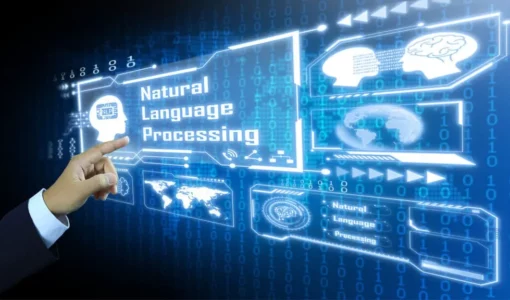Image recognition and classification systems require large-scale and diverse image or video training datasets, which can be challenging to gather. Clickworker can help you overcome this issue through its crowdsourcing platform. Their global team of over 4.5 million workers serves 4 out of 5 tech giants in the U.S.
In other words, it is the process of assigning labels or tags to images based on their content. Image classification is a fundamental task in computer vision, and it is often used in applications such metadialog.com as object recognition, image search, and content-based image retrieval. Visual search uses features learned from a deep neural network to develop efficient and scalable methods for image retrieval.
Security
For instance, Intel has the largest implementation of facial recognition in the workplace by identifying the faces of 20,000 employees in Oregon. The algorithms can cover the diversity of medical data, including brain tumor image segmentation, mammogram mass separation, and breast ultrasound images. Processing applications can also aid in 3D imaging in biomedical applications and pathological medical imaging.
- One of the most common examples of image recognition software is facial recognition, be it when Facebook automatically detects your friends in a photo, or police using it to find a potential suspect.
- However, the uncertainty of these values is higher due to the small number of samples.
- He completed his MSc in logistics and operations management from Cardiff University UK and Bachelor’s in international business administration From Cardiff Metropolitan University UK.
- This dataset was produced by 15 expert taxonomists and 5 non-taxonomists from the US West Coast during a two-day workshop whose main goal was to collect images for training the CNNs.
- In contrast, the level of water turbidity does not relevantly affect the correlation between the observed and the recognised time series.
- This article covers some of the basics of working with image and text recognition.
One of the key benefits of AI-powered technology is its ability to help retailers personalize their offerings to each shopper. By analyzing data on customer behavior and preferences, retailers can create targeted marketing campaigns and promotions that are more likely to resonate with their individual customers. This can lead to increased sales and customer loyalty, as shoppers feel that the retailer is truly understanding their needs and preferences.
Adjusting precision of image recognition
If not, it will try to find out if it could be similar to pixel patterns from the second category, etc. The machine has been programmed to analyze through CNN layers and filters we have mentioned earlier in this article. The algorithm is just processing a comparison between the reference image from its database with the picture which is being proposed to the machine. The method applies data augmentation automatically to see if pixel patterns could fit some of the images.
What is automated image recognition?
Image recognition, in the context of machine vision, is the ability of software to identify objects, places, people, writing and actions in digital images. Computers can use machine vision technologies in combination with a camera and artificial intelligence (AI) software to achieve image recognition.
Supervised learning refers to a training of the data with a set that you labeled yourself. In other words, you imported your own set of pictures and created the classes by yourself as well. For example, You select a picture (input) of a group of cats with a bird, and you only want to know if there is a bird (output) on the picture. Pre-processing your database is important if you want to have a solid dataset to work on, the next step is to create and set up a model which will learn to classify images.
Techniques for Image Recognition
It uses artificial intelligence and machine learning algorithms to learn patterns and features in images to identify them accurately. The aim is to enable machines to interpret visual data like humans do, by identifying and categorizing objects within images. The application then extracts features and recognizes patterns through a combination of ML-based algorithms.
As can be seen, the proportionality approximation conveys that the SPC+CNN-Pier’s sampling of an aggregate volume over the 2000 seconds recorded nearly twice the number of images of the SPC+CNN-Lab. In addition, a majority of the five species showed non-existing-to-poor linear relationships between the Lab-micro and SPC+CNN counts. Showed little ability to model the relationship between the SPC+CNN and Lab-micro, as the SPCs detected the species poorly. Were mostly absent from the Lab-micro, preventing a comparison via linear regression between the sampling methods.
State-of-shelf Image Recognition Software (IR) With SpringPic IR
Manual image annotation is a time-consuming task, and for some computer vision algorithms, can be difficult for humans to achieve. For example, some algorithms require creating pixel maps indicating the exact boundary of multiple objects in an image. Thus, better product recommendations are premised on almost every virtual store. So if you’re looking for a white T-shirt, the system will immediately suggest to you all of the white t-shirts available.
Automated screening of potential organ donors using a temporal … – Nature.com
Automated screening of potential organ donors using a temporal ….
Posted: Thu, 25 May 2023 07:00:00 GMT [source]
Image recognition software can range in price depending on the features and capabilities. Basic image recognition software packages typically start around $50, while more advanced packages can cost several hundred dollars or more. Some of the top-of-the-line packages have even been known to exceed prices of many thousands of dollars depending on their scope and features. The company can compare the different solutions after labeling data as a test data set. In most cases, solutions are trained using the companies’ data superior to pre-trained solutions. If the required level of precision can be compared with the pre-trained solutions, the company may avoid the cost of building a custom model.
What Does Image Recognition Software Integrate With?
In other words, it must be able to assign a class to the image, or indicate whether a specific element is present. An artificial neural network is similar to a human neural network, however an artificial neuron is a mathematical function! Keep in mind that an artificial neural network consists of an input, parameters and an output.
- It also has many applications outside of image classification such as detecting faces in pictures or recognizing text on a page.
- Recent technological progress has rapidly advanced the exploration of the world’s oceans, opening up new possibilities to address questions related to the variety, distinctiveness and complexity of marine life.
- He believes that AI and automation can open new doors of opportunities for businesses, enabling them to innovate, automate, and scale with the appropriate application of AI tools.
- As a bridge between the two methods, a subsample of the hand-acquired bottle sample was imaged by a benchtop version of the SPC (SPC-Lab) and classified with an identically trained CNN (SPC+CNN-Lab).
- You can import a set of images from the API (Application Programming Interface) Keras via a code line.
- AI-powered image analysis is becoming increasingly popular in a range of industries.
Anyline is an AI-powered image recognition software that specializes in OCR (optical character recognition). Anyline is a versatile and reliable image recognition platform that offers a wide range of mobile scanning solutions for various industries, including automotive aftermarket, energy and utilities, and retail. It can read and extract text from images and videos (just like one of the best transcription tools).
The Benefits of Image Recognition
Furthermore, image recognition technology can be used to automate mundane tasks such as identifying objects in an image, counting items, recognizing faces or landscapes, or even tracking changes in a scene over time. Image recognition is a powerful tool for businesses of all sizes, and the benefits it provides are numerous. By leveraging automated systems to analyze images quickly, businesses can gain valuable insights into their customer base and make data-driven decisions about product development and marketing campaigns. In a society where digital images have become prominent in our daily lives, the volumes of data it has generated over the decades are massive. Computer Vision is a field of AI which uses a lot of data, mainly for image detection, recognition, and classification. Image Classification uses Machine Learning algorithms to analyze the presence of items in a picture and to categorize the picture.

Due to their unique work principle, convolutional neural networks (CNN) yield the best results with deep learning image recognition. In addition, AI-based software can be used to quickly process large volumes of digital information. For example, image recognition programs powered by deep learning networks can analyze thousands of medical scans in a matter of minutes to diagnose diseases faster than ever before. Finally, it should be noted that while AI plays an important role in modern-day image recognition solutions, there is still room for manual input from humans who review results and refine processes as needed over time.
LTU Visual Search API
In the example used here, this was a particular zone where pedestrians had to be detected. In quality control or inspection applications in production environments, this is often a zone located on the path of a product, more specifically a certain part of the conveyor belt. A user-friendly cropping function was therefore built in to select certain zones.

Right off the bat, we need to make a distinction between perceiving and understanding the visual world. Various computer vision materials and products are introduced to us through associations with the human eye. It’s an easy connection to make, but it’s an incorrect representation of what computer vision and in particular image recognition are trying to achieve. The brain and its computational capabilities are the real drivers of human vision, and it’s the processing of visual stimuli in the brain that computer vision models are intended to replicate. Besides, the retail and e-commerce segment dominated the market in 2019 and is expected to remain the dominant vertical segment throughout the forecast period.

It uses pattern recognition to detect pre-defined target objects, such as cars or people. The image features resulting from the training and the validation process are shown in the Supplementary Table S4 online, while the automated image classifier is defined by the Supplementary equation Eq. This is a typical issue for the use of stationary underwater cameras, although solutions such as protective coating, wipers, and copper shutters are available44,45,46. In our case, fouling was generally present and was subjected to seasonal variations because these communities grow less during the cold periods and flourish during the warm season47. Similar to the previous cases, the wrong PTZ position of the camera and the image errors sensibly decrease the recognition performance; as shown in Fig. 3(e) and (h) show the recognition results (red boxes) of two crowded scenes acquired during daylight.
Image Recognition in CPG Market to See Revolutionary Growth … – KaleidoScot
Image Recognition in CPG Market to See Revolutionary Growth ….
Posted: Wed, 07 Jun 2023 15:20:14 GMT [source]
A deep learning approach to image recognition can involve the use of a convolutional neural network to automatically learn relevant features from sample images and automatically identify those features in new images. The corresponding smaller sections are normalized, and an activation function is applied to them. Rectified Linear Units (ReLu) are seen as the best fit for image recognition tasks. The matrix size is decreased to help the machine learning model better extract features by using pooling layers. Depending on the labels/classes in the image classification problem, the output layer predicts which class the input image belongs to.
Can you own AI generated images?
US Copyright Office: AI Generated Works Are Not Eligible for Copyright.
Is image recognition part of AI?
One of the typical applications of deep learning in artificial intelligence (AI) is image recognition. Familiar examples include face recognition in smartphones. AI is expected to be used in various areas such as building management and the medical field.

